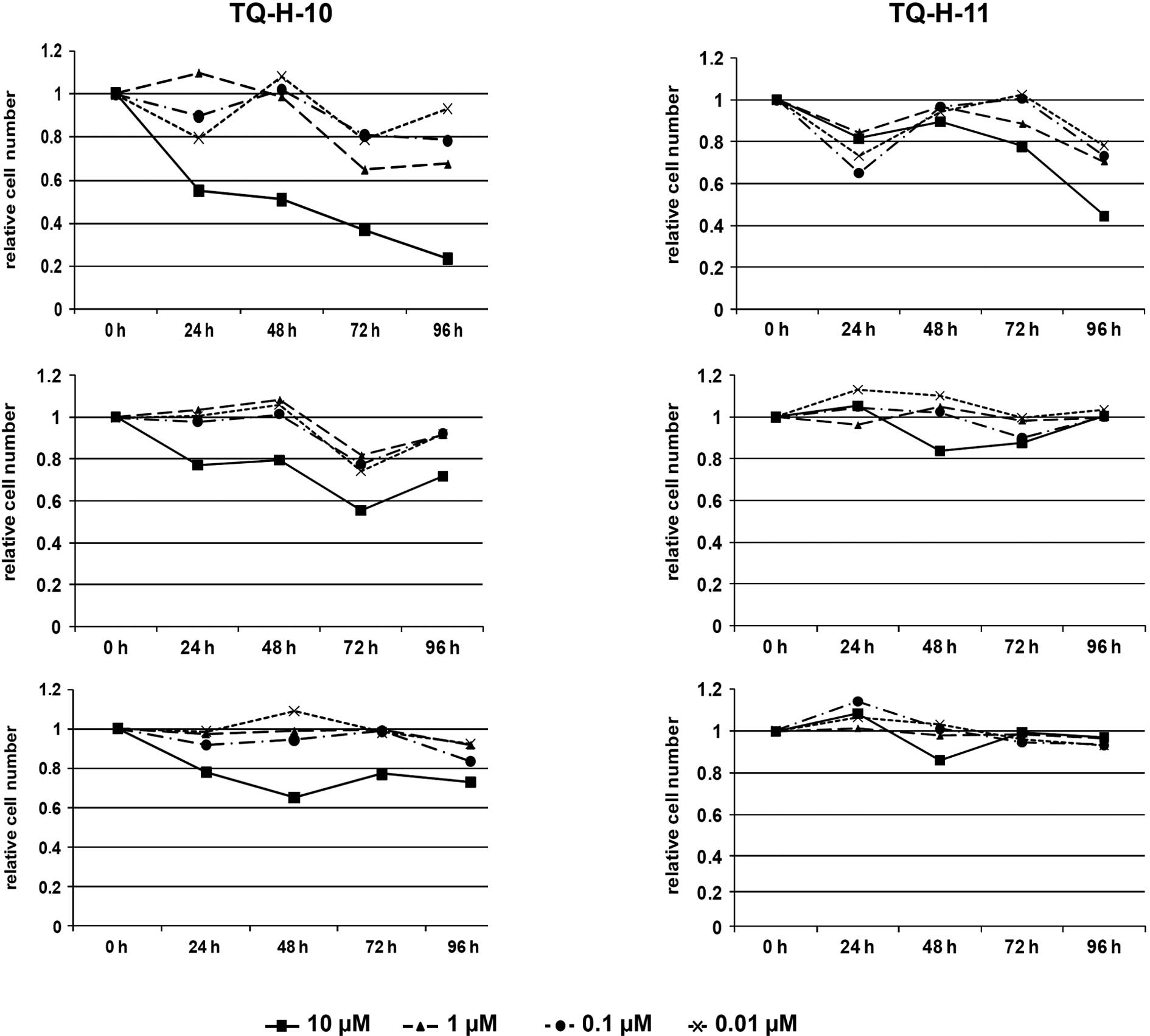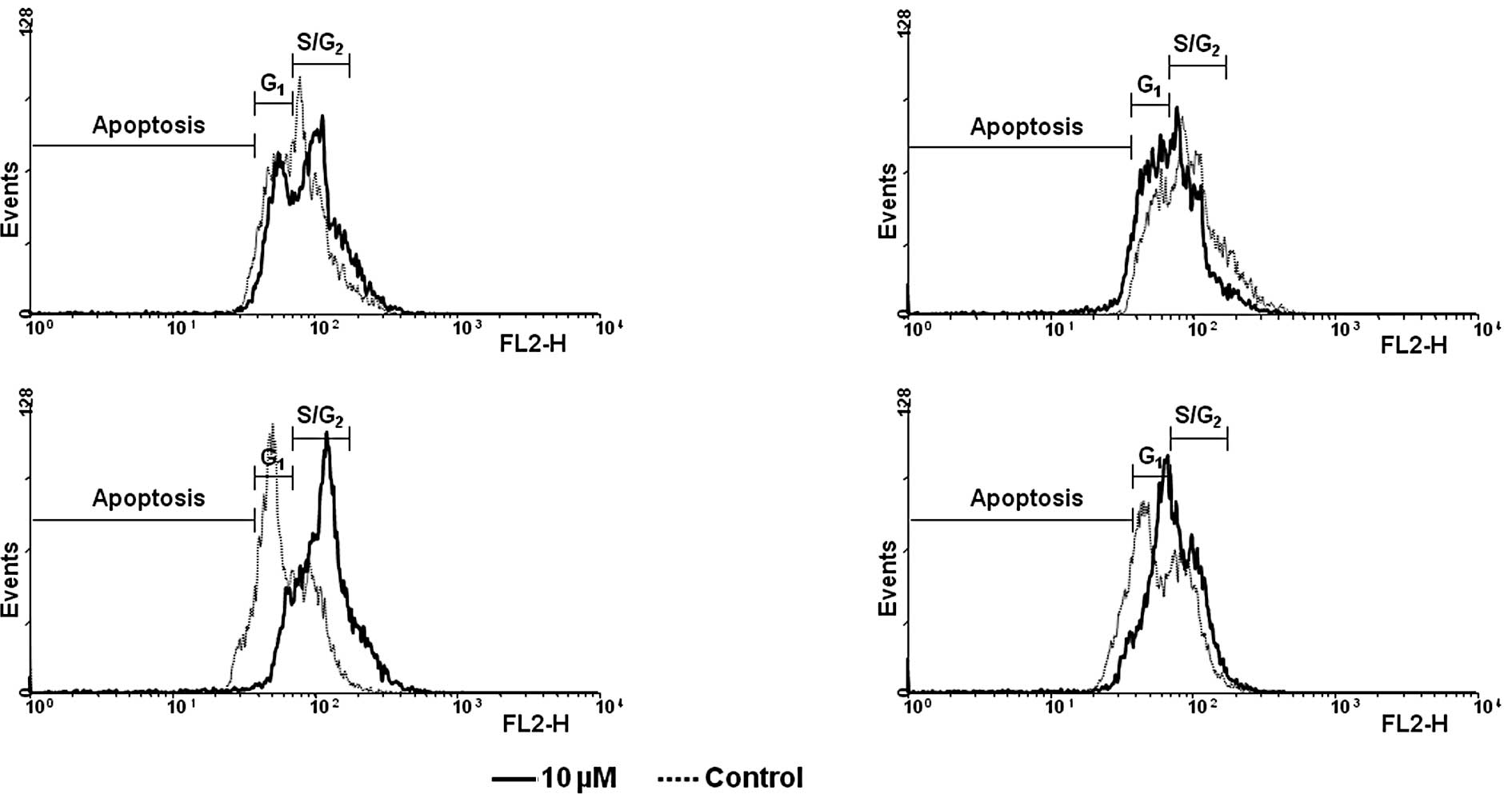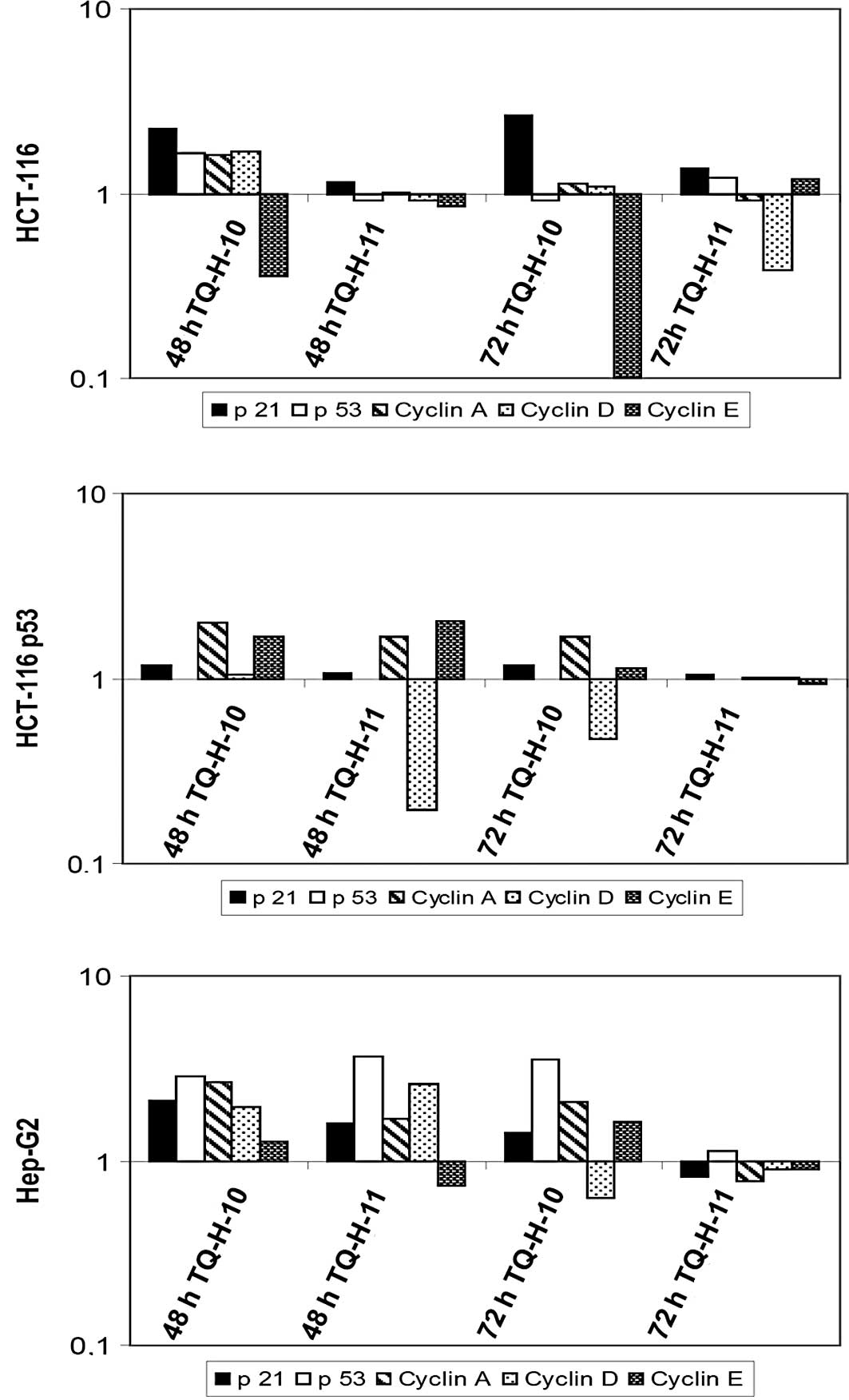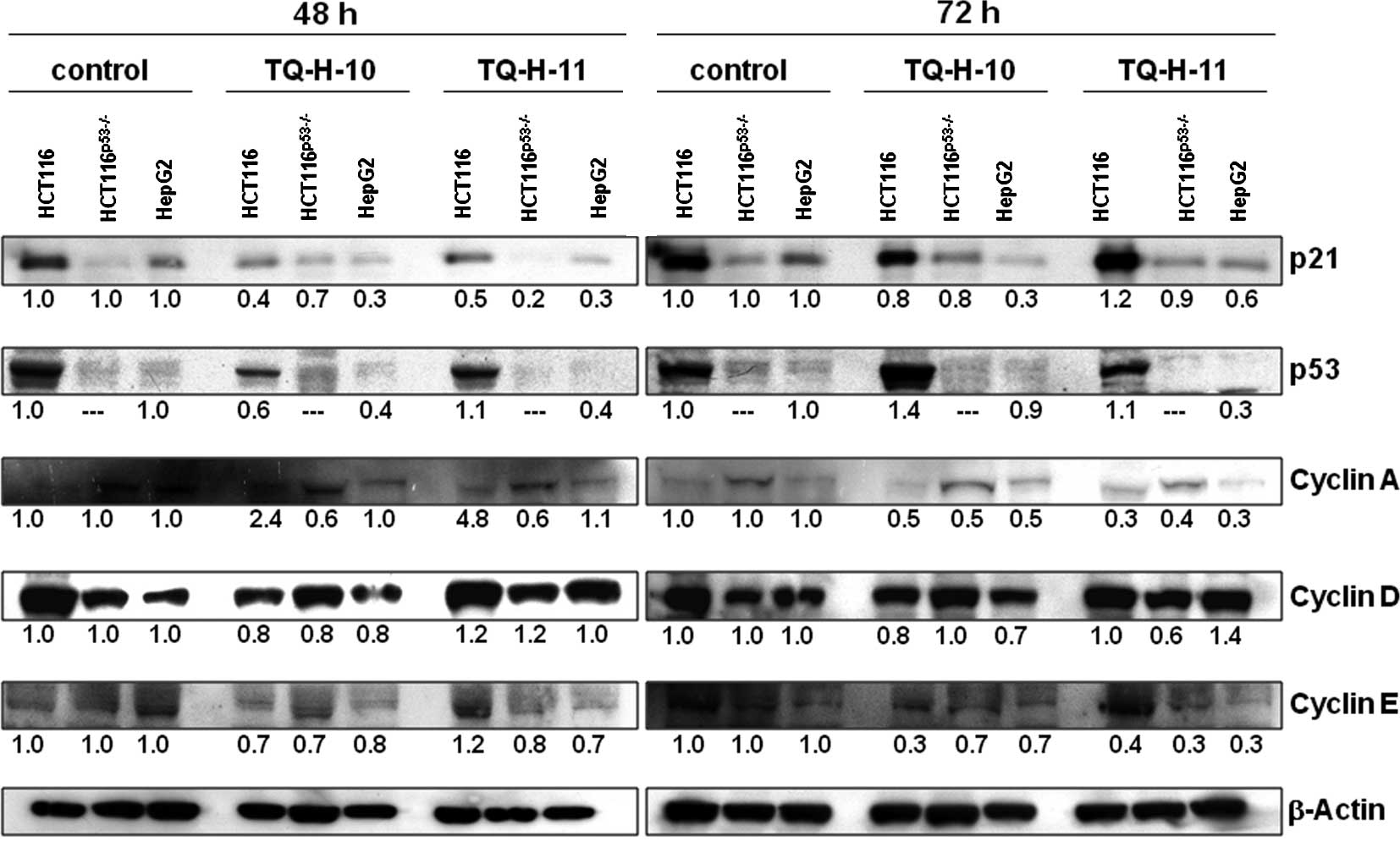|
1.
|
Amin A, Gali-Muhtasib H, Ocker M and
Schneider-Stock R: Overview of major classes of plant-derived
anticancer drugs. Int J Biomed Sci. 5:1–11. 2009.PubMed/NCBI
|
|
2.
|
Worthen DR, Ghosheh OA and Crooks PA: The
in vitro anti-tumor activity of some crude and purified components
of blackseed, Nigella sativa L. Anticancer Res.
18:1527–1532. 1998.PubMed/NCBI
|
|
3.
|
Gali-Muhtasib H, Diab-Assaf M, Boltze C,
et al: Thymoquinone extracted from black seed triggers apoptotic
cell death in human colorectal cancer cells via a p53-dependent
mechanism. Int J Oncol. 25:857–866. 2004.PubMed/NCBI
|
|
4.
|
Gali-Muhtasib H, Kuester D, Mawrin C, et
al: Thymoquinone triggers inactivation of the stress response
pathway sensor CHEK1 and contributes to apoptosis in colorectal
cancer cells. Cancer Res. 68:5609–5618. 2008. View Article : Google Scholar : PubMed/NCBI
|
|
5.
|
Al-Ali A, Alkhawajah AA, Randhawa MA and
Shaikh NA: Oral and intraperitoneal LD50 of thymoquinone, an active
principle of Nigella sativa, in mice and rats. J Ayub Med
Coll Abbottabad. 20:25–27. 2008.PubMed/NCBI
|
|
6.
|
Breyer S, Effenberger K and Schobert R:
Effects of thymoquinone-fatty acid conjugates on cancer cells.
ChemMedChem. 4:761–768. 2009. View Article : Google Scholar : PubMed/NCBI
|
|
7.
|
Martin BT and Strebhardt K: Polo-like
kinase 1: target and regulator of transcriptional control. Cell
Cycle. 5:2881–2885. 2006. View Article : Google Scholar : PubMed/NCBI
|
|
8.
|
Okamoto K, Neureiter D, Alinger B, et al:
The dual EGF/VEGF receptor tyrosine kinase inhibitor AEE788
inhibits growth of human hepatocellular carcinoma xenografts in
nude mice. Int J Oncol. 33:733–742. 2008.PubMed/NCBI
|
|
9.
|
Jabari S, Meissnitzer M, Quint K, et al:
Cellular plasticity of trans- and dedifferentiation markers in
human hepatoma cells in vitro and in vivo. Int J
Oncol. 35:69–80. 2009.PubMed/NCBI
|
|
10.
|
Gali-Muhtasib H, Ocker M, Kuester D, et
al: Thymoquinone reduces mouse colon tumor cell invasion and
inhibits tumor growth in murine colon cancer models. J Cell Mol
Med. 12:330–342. 2008. View Article : Google Scholar : PubMed/NCBI
|
|
11.
|
Ocker M and Schneider-Stock R: Histone
deacetylase inhibitors: signalling towards p21cip1/waf1. Int J
Biochem Cell Biol. 39:1367–1374. 2007. View Article : Google Scholar : PubMed/NCBI
|
|
12.
|
Shoieb AM, Elgayyar M, Dudrick PS, Bell JL
and Tithof PK: In vitro inhibition of growth and induction
of apoptosis in cancer cell lines by thymoquinone. Int J Oncol.
22:107–113. 2003.
|
|
13.
|
Tan M, Norwood A, May M, Tucci M and
Benghuzzi H: Effects of (-)epigallocatechin gallate and
thymoquinone on proliferation of a PANC-1 cell line in culture.
Biomed Sci Instrum. 42:363–371. 2006.PubMed/NCBI
|
|
14.
|
Edris AE: Anti-cancer properties of
Nigella spp. essential oils and their major constituents,
thymoquinone and beta-elemene. Curr Clin Pharmacol. 4:43–46.
2009.
|
|
15.
|
El-Mahdy MA, Zhu Q, Wang QE, Wani G and
Wani AA: Thymoquinone induces apoptosis through activation of
caspase-8 and mitochondrial events in p53-null myeloblastic
leukemia HL-60 cells. Int J Cancer. 117:409–417. 2005. View Article : Google Scholar : PubMed/NCBI
|
|
16.
|
Gali-Muhtasib HU, Abou Kheir WG, Kheir LA,
Darwiche N and Crooks PA: Molecular pathway for
thymoquinone-induced cell-cycle arrest and apoptosis in neoplastic
keratinocytes. Anticancer Drugs. 15:389–399. 2004. View Article : Google Scholar : PubMed/NCBI
|
|
17.
|
Roepke M, Diestel A, Bajbouj K, et al:
Lack of p53 augments thymoquinone-induced apoptosis and caspase
activation in human osteosarcoma cells. Cancer Biol Ther.
6:160–169. 2007. View Article : Google Scholar : PubMed/NCBI
|
|
18.
|
Kruse JP and Gu W: Modes of p53
regulation. Cell. 137:609–622. 2009. View Article : Google Scholar
|
|
19.
|
Sanchez I and Dynlacht BD: New insights
into cyclins, CDKs and cell cycle control. Semin Cell Dev Biol.
16:311–321. 2005. View Article : Google Scholar : PubMed/NCBI
|
|
20.
|
Sherr CJ and Roberts JM: CDK inhibitors:
positive and negative regulators of G1-phase progression. Genes
Dev. 13:1501–1512. 1999. View Article : Google Scholar : PubMed/NCBI
|
|
21.
|
Ekholm-Reed S, Mendez J, Tedesco D,
Zetterberg A, Stillman B and Reed SI: Deregulation of cyclin E in
human cells interferes with prereplication complex assembly. J Cell
Biol. 165:789–800. 2004. View Article : Google Scholar : PubMed/NCBI
|
|
22.
|
Hwang HC and Clurman BE: Cyclin E in
normal and neoplastic cell cycles. Oncogene. 24:2776–2786. 2005.
View Article : Google Scholar : PubMed/NCBI
|
|
23.
|
Mendez J: Cell proliferation without
cyclin E-CDK2. Cell. 114:398–399. 2003. View Article : Google Scholar : PubMed/NCBI
|
|
24.
|
Keck JM, Summers MK, Tedesco D, et al:
Cyclin E over-expression impairs progression through mitosis by
inhibiting APC(Cdh1). J Cell Biol. 178:371–385. 2007. View Article : Google Scholar : PubMed/NCBI
|
|
25.
|
Schraml P, Bucher C, Bissig H, et al:
Cyclin E overexpression and amplification in human tumours. J
Pathol. 200:375–382. 2003. View Article : Google Scholar : PubMed/NCBI
|
|
26.
|
Muller-Tidow C, Metzger R, Kugler K, et
al: Cyclin E is the only cyclin-dependent kinase 2-associated
cyclin that predicts metastasis and survival in early stage
non-small cell lung cancer. Cancer Res. 61:647–653. 2001.PubMed/NCBI
|
|
27.
|
Erlanson M and Landberg G: Prognostic
implications of p27 and cyclin E protein contents in malignant
lymphomas. Leuk Lymphoma. 40:461–470. 2001. View Article : Google Scholar : PubMed/NCBI
|
|
28.
|
Wingate H, Puskas A, Duong M, et al: Low
molecular weight cyclin E is specific in breast cancer and is
associated with mechanisms of tumor progression. Cell Cycle.
8:1062–1068. 2009. View Article : Google Scholar : PubMed/NCBI
|















